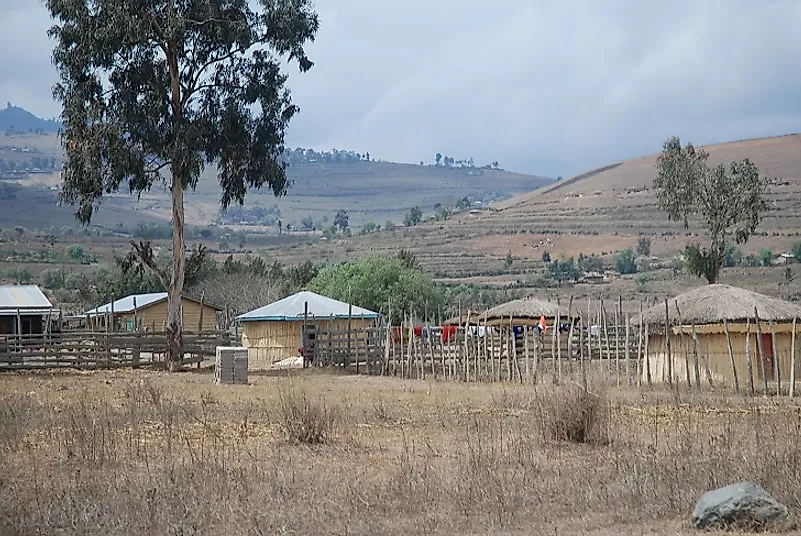Countries With The Least Rural Electrification

The lowest levels of rural electricity access are concentrated in Sub-Saharan Africa. The World Bank and the International Finance Corporation, through its program Energy Sector Management Assistance Program (ESMAP), has started the Lighting Africa enterprise to supply electricity to about 500 million people in Sub-Saharan Africa. The ongoing project was started in 2008 with initial target of supplying energy to about 250 million people in the region.
"Energy Poverty" in Sub-Saharan African Countries
Sub-Saharan Africa today still suffers from electricity deprivation due to many factors that have remained unchanged for the last 30 years. Lack of infrastructure and sustainable programs have affected initiatives to provide energy to these countries. Burundi can only supply electricity to about 1.2% of its population due to insufficient power production. The government has found energy alternatives like peat and wood which accounts for 94% of its power consumption. Sierra Leone has been able to provide electrical power to only about 1.2% of its population as well. The government has formed two new power suppliers from several entities to provide better electricity while future plans for independent power plants to also operate. With these aim, breaking up the power generation, transmissions, and distribution of electricity will improve overall supply. Liberia has its state-owned power plant but can only supply electricity to about 1.2% of its population. The rest is generated by private power generators. The government has also tapped supply from the West African Power Pool. Future supplies are expected to be generated by a new hydroelectric power plant and three new fuel power plants. Burkina Faso can only supply electricity to about 1.4% of its population. Lack of infrastructure and below average generation of existing power plants has led to this problem. A 1999 grant from Sweden has somehow alleviated the power supply problem. Malawi has been plagued with energy transmission problems enabling it to supply power to only about 2.0% of its people. Gas and electricity are expensive and a rare commodity. Both urban and rural areas use firewood and charcoal for cooking as electricity tariffs rose 84% in 2013. The government has projects that would improve cook stoves for health issue concerns. Guinea has been plagued with government corruption and lack of foreign investments that electricity is supplied to only about 2.9% of its people. Power plant management issues, high operational costs, and crumbling infrastructure all contribute to short power supply. Hydroelectric power plants are future projects with Guinea's large rivers and sufficient rainfall. Chad has crude oil reserves and thermal plants yet only 3.1% of its population has access to electricity. The rest of its people make do with firewood for fuel. South Sudan has been plagued with energy problems and internal strife since its independence from Sudan in 2011. Despite its exports of oil, minerals and timber, only 3.5% of its people have access to electricity. Lack of infrastructure and good management has delayed improved electricity supply. Tanzania can only afford to supply power to about 3.6% of its people. Its power plants use gas and hydroelectric power to generate electricity but power loss is a problem due to inadequate and substandard power transmission infrastructures. Drought has also affected the hydroelectric power capacity transmission. Mauritania provides electricity access to about 4.4% of its population despite its thermal power plants and hydroelectric power imports from Mali. Although it also plans to import more hydroelectric power from Senegal.
Energy Potential in Sub-Saharan African Countries:
The scarcity of energy in Sub-Saharan Africa and the rest of the continent can be eliminated with sustainable fuels for power generation. The alternative use of hydroelectric power and geothermal power instead of coal and firewood would greatly reduce carbon dioxide emissions. A study suggested that only a small portion of the energy resources available in Africa has been tapped and the use of these renewable energy would greatly improve people’s lives in the continent.
Countries With The Least Rural Electrification
| Rank | Country | % of Population With Rural Electricity Access |
|---|---|---|
| 1 | Burundi | 1.2% |
| 2 | Sierra Leone | 1.2% |
| 3 | Liberia | 1.2% |
| 4 | Burkina Faso | 1.4% |
| 5 | Malawi | 2.0% |
| 6 | Guinea | 2.9% |
| 7 | Chad | 3.1% |
| 8 | South Sudan | 3.5% |
| 9 | Tanzania | 3.6% |
| 10 | Mauritania | 4.4% |











